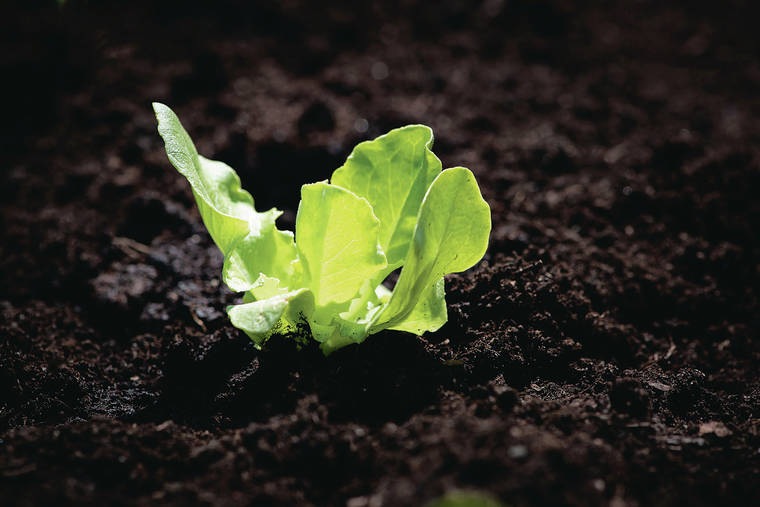During war times, governments have encouraged people to plant “victory gardens” with the goal that families could grow produce to help supply essential nutrients. In addition to fruits and vegetables being the major sources of vitamins A and C, they also provide a wide variety of nonessential but beneficial phytochemicals. These compounds often are the source of beautiful colors in these foods. In our bodies they do things like protect against oxidative stress.
Another benefit of freshly picked produce is that it generally is at its nutritional peak when harvested. From harvest to consumption, nutrients, like vitamin C, slowly decline.
Question: Can a person produce food without a yard or community garden plot?
Answer: Regardless of your living situation, there are things you can grow to produce some fresh food. For those with south- or southwest-facing lanai or windowsills, which allow for six to eight hours of sunlight, a multitude of herbs and vegetables can be grown in containers.
The simplest types of vegetables to grow successfully are loose-leaf greens, such as lettuce, spinach and chard. In as little as five weeks, you can produce 10 or more heads of lettuce, and by picking individual lettuce leaves as needed, each head of lettuce can regrow in just two additional weeks for three additional harvestings. Also, growing greens inside significantly reduces the chance of being exposed to the parasite-causing rat lungworm disease.
Purchasing small plant starts and a bag of potting soil will cost less than $10. Growing containers can be as basic as using disposable plastic food containers or as elaborate as desired. It is essential to ensure that plants are not overwatered, and therefore all growing containers should have drainage holes, regardless of the type.
Other plants that can be successfully grown on windowsills include bush beans, bush cherry tomatoes, carrots, peppers, radishes and shallots. Microgreens can also become part of your indoor garden. Check out the Epic Gardening YouTube video to get you started.
Q: Are there ways of growing food that don’t require southwest-facing windows or soil?
A: Growing sprouts provides nutritional benefits similar to fresh produce and is super easy. Sprouting requires about two tablespoons of seeds, a large wide-mouth jar, cheesecloth or any small-mesh screen to allow water drainage, and air circulation. No sunlight needed.
The Kratky hydroponic method, developed by University of Hawaii-Manoa emeritus professor Bernard Kratky, grows plants much faster than the same plants grown in soil and can be worth the investment in grow lights. There are exceptional do-it-yourself YouTube videos on the Kratky method. Our favorites are by Tikki O, Khang Starr and Mike VanDuzee. Their videos are easy to follow and nearly foolproof.
Alan Titchenal, Ph.D., C.N.S., and Joannie Dobbs, Ph.D., C.N.S., are nutritionists in the Department of Human Nutrition, Food and Animal Sciences, College of Tropical Agriculture and Human Resources, University of Hawaii at Manoa. Dobbs also works with University Health Services.

